
Have you ever had a friend that the only time you heard from them was when they wanted something?
Feels yucky, doesn’t it?
Thank God for caller ID! Now we don’t have to talk to them if we don’t want to.
Why do we stay in some relationships and not in others?
I believe it’s this reason: we only stay in relationships and situations where the positives outweigh the negatives.
Think about it: we’re willing to put up with someone’s odd habits if we like them well enough.
The fact that some of us have been married over 20 years is testament to that!
Put it in context of your donors – why do they stay? Why do they keep giving?
It’s because what they get out of it outweighs any annoyances they may be experiencing.
In other words, if they love your cause enough, they’re willing to tolerate bad treatment from you.
It’s all about what they get. And what exactly do they get?
They get to feel good.
Donors get to be part of something that matters in the world. They get to help you change lives for the better.
It’s really cool if you stop and think about it.
So, if they want to be part of making a difference and they only stick around as long as the positives outweigh the negatives, then the question becomes this: how are you adding more positives to their experience?
That’s where your nonprofit newsletter comes in.
Your nonprofit newsletter’s purpose
Most nonprofits rely on their newsletter to communicate with their donors.
In theory, this works.
The problem is that newsletters tend to fall to the bottom of the priority list when things get busy. Next thing you know, your January newsletter is going out in September, and it’s been months since your donors heard anything from you except ask after ask after ask.
Ouch.
That doesn’t feel good at all.
So, you need to make your nonprofit newsletter a priority.
How about not thinking of it as a newsletter at all but as a weapon of inspiration.
To inspire someone is to influence them or fill them with a particular thought or feeling.

Imagine if you could purposefully influence your donors to feel compassion for the lives you’re trying to change, and feel motivated to whip out their wallet to support you to make it happen.
That’s a lot different than being that person that only shows up with their hand out, wanting something!
Inspiration is the magic that most nonprofits are missing.
And really, it’s hard to inspire donors when you’re busy, overwhelmed or too focused on internal problems.
You have to make time for delivering inspiration. You have to understand your donors well enough to know what will inspire them. You have to plan for it. You have to make it a priority.
To create loyal donors, you need to provide regular inspiration. You can’t create a video once a year and expect that to move your people to give big all year long. Or send half-baked newsletters whenever you get around to it.
Got it?
Top 3 common nonprofit newsletter mistakes
Okay, so you understand that you need to communicate regularly with your donors.
That means you need to send the ultimate nonprofit email newsletter and it needs to go out monthly. I mean it – send it out every month. And your print newsletter should go out quarterly.
If you can’t make that happen, then you don’t value your donors enough.
If you did, you’d know that your newsletter is one of the most important tools for communicating with them, inspiring them, and making them feel good about supporting you.
To make sure your nonprofit newsletter accomplishes these 3 important objectives, avoid these common mistakes that are killing your chances of getting another donation from your donor.
1. Boring as a brick. Most nonprofit newsletters are written at the last minute by people who are in a hurry to get them done. The writer is desperately trying to just get it out the door so they can check it off their list, and hasn’t stopped to think about what the donor is interested in. So the content isn’t relevant to the donor, which means she won’t read it. It’s probably poorly written, full of jargon and insider language, and leaves your poor donor feeling tired and frustrated.
If you are sending boring newsletters, not only is it training your donors to stop reading anything you send (because you’re probably consistently boring), but it’s pushing them away which means they’re already looking for another good cause to support.
The fix: Don’t be boring. Seriously, pause for a moment to think about what your donor wants to know about, and write that. Leave time for editing and find someone who can make sure your message is coming through loud and clear. Include stories with good photos or video that tug at your donor’s heart strings.
When your newsletter is a weapon of inspiration, it’s full of stories that make your donor say “I love this group! They do such good work.” THAT will keep a donor giving to your organization this year.
Here’s a great example of a newsletter that launches right into a story and leaves NO room for boredom! Their use of imagination language (“Can you imagine the isolation…”) gets the reader involved almost from the beginning. Great job to our clients at BESTWA for this newsletter.
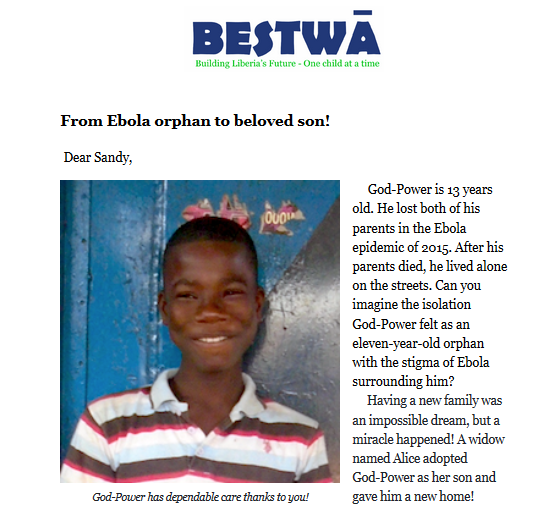
2. Flat as a pancake. Most newsletters are emotionally flat. They’re full of facts and stats, and have no heart. It’s easy to fall into the trap of trying to prove how good your nonprofit is, throwing mind-numbing numbers at donors to impress them. Or maybe the person writing the newsletter has no writing skill. Most people are pressed for time and won’t stop long enough to read long pages full of text to try to decipher what you’re trying to say.
When you send flat newsletters, you’re depriving your donors of the chance to care about your work and the chance to feel good about supporting you.
The fix: Remember, giving is an emotional act. People give based on something they feel, then back up their decision with facts. Want to connect with your donor? Share a heart-warming story to inspire your reader.
Here’s a great example of emotion in this newsletter from the Humane Society of the Tennessee Valley. They added a link to a video on their Facebook page so you can see the kittens playing for yourself (clever strategy!!). The rest of the newsletter is short and sweet, and makes you feel good about supporting them.
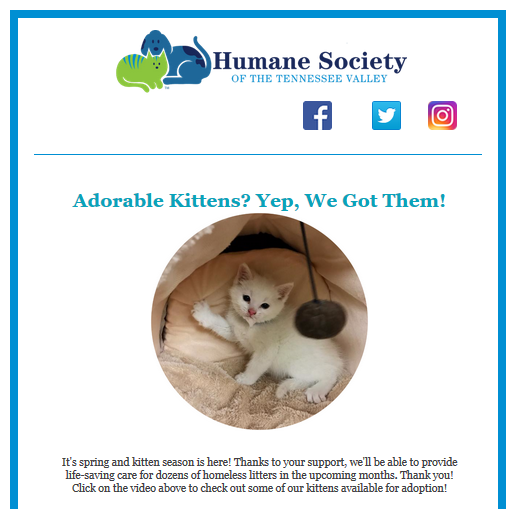
3. Regular as a rainstorm. Since newsletters don’t seem to be a real priority to most nonprofits, they go out haphazardly. That means you’re not building up knowledge and trust in your donor’s mind. Or your donor may think that since they haven’t heard from you, you’ve solved the problem and don’t need them anymore. At a minimum, they’ll feel unwanted, unneeded, and unappreciated, which is a bad combination and leads to the donor lapsing.
The fix: Send your newsletter regularly. Consistent communication is critical to donor relationships. Done well, it can reinforce that their donation matters and that they’re a vital partner in your work. They’ll at least get used to hearing from you and start looking forward to your stories.
Here’s a short-and-sweet nonprofit newsletter that goes out every month without fail. This regularity has helped our client Draft Gratitude build some serious relationships with their donors, resulting in more frequent and larger donations.
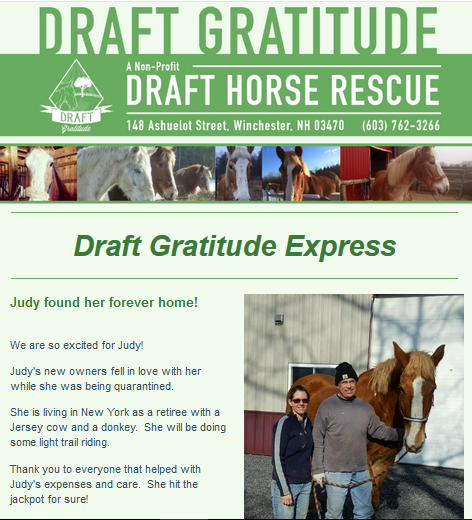
The Bottom Line
When people are inspired, they stick around. They stay interested. They keep giving.
When people aren’t feeling donor love from your organization, they go away. When they believe their gift doesn’t matter or they think they’re just a number among your many supporters, they’ll drift away.
Give donors what they want from you and they’ll not only stick around, but they’ll give bigger and more frequent donations.
Use your nonprofit newsletter as a tool to help you show your donors how much you value and appreciate them, and fundraising will get easier.



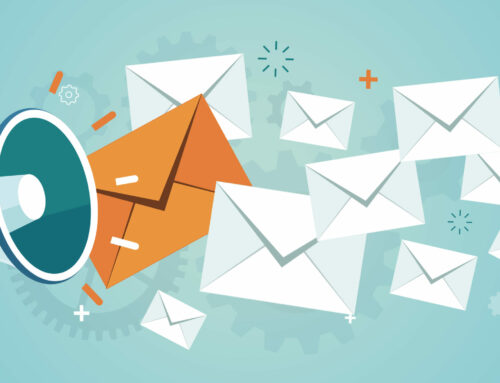

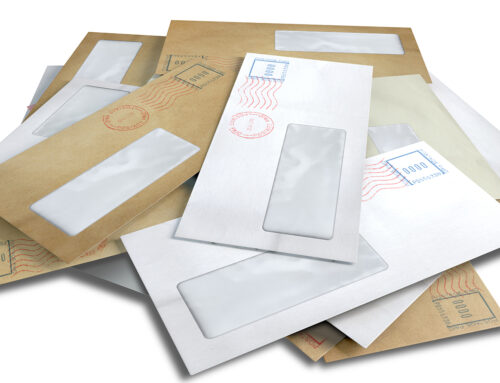
Leave A Comment